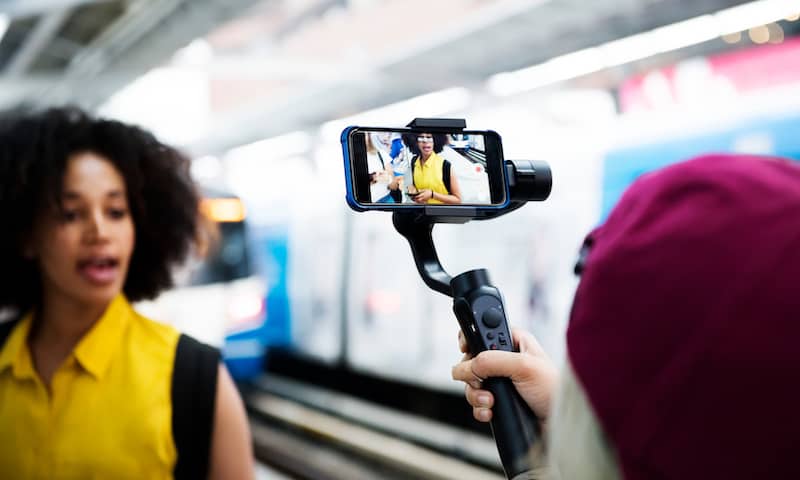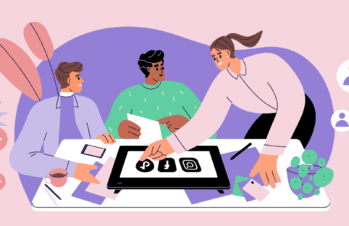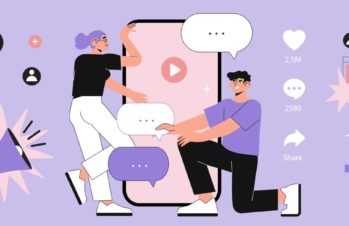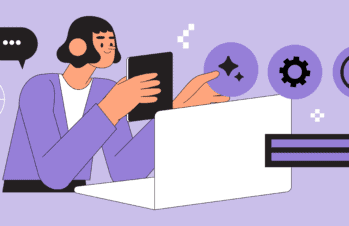B2B influencer marketing, as well as the similar but different phenomenon, B2B creator marketing, is in a much earlier stage of development than B2C influencer marketing.
There are many reasons for this, from B2B’s longer, more circuitous sales cycles, to the (mistaken) perception that B2B buyers don’t rely on social media research when buying products the way that B2C customers do.
However, it’s been firmly established that B2B influencer marketing is worth the money. In fact, influencer marketing is even more important for B2B than B2C, considering that B2B purchases are far larger, and brand reputation and word of mouth have more sway in convincing B2B customers to buy.
Knowing that, how do you get started in influencer or creator marketing for your B2B brand?
This guide will help.
What is B2B influencer marketing?
Here’s our explanation of B2B influencer marketing, much of which is taken from this recent Zen post we wrote.
An influencer is someone on social media who has a highly engaged following—it doesn’t have to be huge.
Micro-influencers, for example, may have only a couple thousand followers, but those followers engage with their content, respect their opinions, and most importantly, trust them and what they have to say.
Brands partner with these influencers to develop authentic promotions of their products or services that are—or should be—based on the influencer’s interest in the brand, and belief that the brand has something of value to provide their audience.
If either the brand or the influencer isn’t being genuine, the promotion likely will fail. B2B audiences, just like B2C audiences, are acutely aware of disingenuousness and “selling out.” Any hint of that is bound to hurt both your brand and the influencer. In other words, the partnership has to be relevant and make sense for both parties.
An influencer partnership that makes sense:
Influencer: A work-from-home mom who runs a popular blog and social profiles offering advice and sharing experiences with other remote-working parents.
B2B brand: A company that makes productivity software geared toward remote workers.
An influencer partnership that doesn’t make sense:
Influencer: A Gen Z health-conscious influencer who posts healthy recipes, wellness info, and motivational content, and who has a massive following among Gen Z and Millennials.
B2B brand: That same company that makes productivity software geared toward remote workers.
The Gen Z influencer may be able to shoehorn in a mention of the software somehow, but it’s not going to sound like an honest or sincere recommendation. And it’s bound to turn off many of the influencer’s followers.
How is B2B creator marketing different from B2B influencer marketing?
To understand the difference between B2C creator marketing and B2C influencer marketing, we have to know the difference between a creator and an influencer.
A creator is someone who creates original content. That could be someone who creates art, like a photographer, a filmmaker, a writer, a graphic designer, etc., or someone who films themselves doing something specific, like stunts, or dog training.
An influencer is someone who influences people’s purchasing decisions. They can create original content too, but mainly in the form of social media posts, tutorials, or reviews.
Of course, sometimes there’s significant overlap between creators and influencers. Lots of creators influence people’s purchasing decisions, as well as their interests, trends they follow, and more. And plenty of influencers also create high-value original content.
The result of this is that both influencer and creator marketing are highly versatile and multi-faceted.
An influencer could do a straightforward review of your product, or create a series of video tutorials showing how they use your product, or post about how they use your service in their own work life.
A creator could mention your product in a video about how they manage their photography business or develop a series of graphic artworks that were created using your product.
The only “right” type of creator/influencer marketing is marketing that’s authentic, sincere, and offers something of value to both your audience and that of the creator/influencer. What this looks like will depend significantly on your goals, your product or service, and the influencer you partner with.
Relevant post: The Same, But Different: Influencer Marketing in the B2B Environment
How to get started with B2B influencer or creator marketing
If you’re just getting started, there are two questions you have to answer right off the bat.
- What are our goals?
- Who are we speaking to?
Knowing the answers to these questions is the only way you can identify the right influencer or creator to start working with.
If you’re a brand-new startup, your goal might be gaining a foothold in your market.
If you’re an established company breaking into a new geographical area, your goal could be reaching companies in that specific area.
Maybe you want to build awareness or increase your lead generation. Get specific about your goal, and then build your campaign around that.
After you’ve identified your goal, it’s time to figure out whom you’re speaking to.
This should follow naturally from the goal you wrote down, but it will also be useful to go back to your buyer personas and customer demographic data. Are the primary decision-makers you deal with CIOs, CMOs, heads of advertising? What are their pain points? What outlets or channels do they turn to for industry news, trends, and opinions?
From there, you can start looking for the right influencer.
How to find the right B2B influencer or B2B creator for your brand
The first step to finding the right influencer or creator to work with is simple and often overlooked: look within your existing network.
It’s tempting to think you have to use an influencer marketing platform, or do hours of research on social media and industry sites, in order to find someone who will be a fit for your brand, and sometimes that ends up being true.
However, you may very well have industry influencers already following and engaging with you. These people may even be talking about your brand online without you knowing it—indeed, unless you’re engaged in ongoing social listening using a tool like Hootsuite or Tweetdeck, you may be missing a lot of that online chatter.
If you do have people who are already acting as brand ambassadors or advocates on their own, do a deeper dive into their profiles to see what their follower count is like and more importantly, how engaged those followers are. Remember, a person doesn’t necessarily have to call themselves an influencer to be an influencer. The same is true for creators.
If you don’t find anyone who fits the bill in your existing network (or even if you do), it can be a good idea to either work with a PR agency that will help you run influencer marketing campaigns, or use an influencer marketing platform.
Finally, if those options aren’t in the cards right now, these are some additional tips to help you figure out which influencers or creators would be a good fit for your B2B brand.
Relevant post: B2B Influencer Marketing: An Ultimate Guide Plus Case Studies
Start by manually searching Instagram
Instagram is still one of the best places to find relevant influencers and content creators, as visual content continues to be more popular than almost any other kind.
Essentially, any influencer or creator who could make a good B2B brand partner will have a strong Instagram presence, even if that’s not their primary platform.
A few ways to find influencers on Instagram include:
- Looking at other relevant brands in your industry and seeing which influencers are tagging them—do this by navigating to the brand’s profile and tapping the “Tagged” section.
- Search using hashtags relevant to your industry or niche. You can also scroll through only sponsored posts by searching #ads, #sponsored, and/or #paid. This will let you see which influencers or creators are posting promoted or sponsored posts.
- Check through your DMs to see if any influencers have been messaging you.
- If you’re already working with an influencer or creator, you can ask them for recommendations of others whom you should work with.
Once you’ve found some that look like they might be a fit, it’s time to get in touch.
Contacting them by email or through their website is preferable, in most cases, to contacting them through their DMs, but either can work.
Make sure you let them know what you like about their work and why you’re reaching out—you’ve got to establish a positive relationship before asking them to partner.
Check for fake engagement and ask for data before committing
Fake engagement is still a major problem on social media platforms, so you can’t always trust what you see on an influencer’s profile.
Comments that are nothing but a couple of emojis, generic comments like “Nice!” or “Keep it up, love what you’re doing” are more likely to be fake. The comments you want to see are ones that specifically mention what the person is doing, their previous work, ask questions, etc.
To be fair, fake engagement is usually more of a problem for those in the B2C world. However, you should still do your due diligence just like you would before engaging an agency or other business partner.
Finally, ask the influencer or creator for information on their audience and engagement levels before committing to any partnership. It’s perfectly acceptable to request screenshots of their audience demographic and engagement data—this information is usually available through the platform’s analytics, and is easy to get and to send.
If, after you’ve completed your research, reached out to the influencer/creator, and vetted them and their audience thoroughly, the partnership seems like a good fit, you’re off and running!
It’ll be up to you and your B2B creator or influencer to decide what kind of content will yield the best results for both of you.
Just remember, you’re not purchasing an ad—you’re partnering with another person. As such, you won’t be able to dictate what the influencer or creator does. The process will be much more of a back-and-forth, with brainstorming and negotiating involved.
Sound like a lot? Get in touch to discuss how B2B influencer and B2B creator marketing can help your brand grow.




